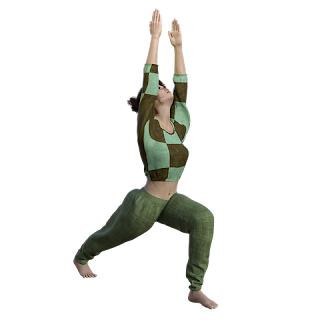Stretching and its types
Types of stretching
Stretching is the practice of elongating the muscles in order to increase flexibility and range of motion. There are several types of stretching, including static stretching, dynamic stretching, and PNF stretching.
Types:
- Static stretching
- Dynamic stretching
- PNF stretching
Static stretching involves holding a muscle in a stretched position for a period of time. This type of stretching is best for warming up before exercise, and for increasing overall flexibility.
Dynamic stretching involves moving the body through a full range of motion, using controlled movements. This type of stretching is best for preparing the body for physical activity and for increasing power and performance.
PNF stretching, or proprioceptive neuromuscular facilitation, is a type of stretching that uses muscle contractions to increase flexibility. This type of stretching is most effective for athletes and people with very tight muscles.
It is important to note that stretching should be done in a slow and controlled manner, and never to the point of pain. It's also beneficial to hold stretches for at least 15-30 seconds.
What is Dynamic Stretching
Dynamic stretching is a type of stretching that involves moving the body through a full range of motion, using controlled movements. This type of stretching is best for preparing the body for physical activity, and for increasing power and performance.
Dynamic stretching can be done by actively moving a muscle or joint through its full range of motion, using movements such as lunges, arm circles, leg swings, and trunk twists. The goal of dynamic stretching is to gradually increase the body's temperature and blood flow, preparing the muscles for activity.
Dynamic stretching can also be incorporated into a warm-up routine before exercise or sports. It is considered more effective than static stretching for warming up, as it increases the heart rate and blood flow to the muscles, helping to prevent injury.
It's important to note that dynamic stretching should be done with proper form and in a controlled manner. It's also beneficial to start with light movements and gradually increase the intensity, as well as to avoid bouncing or ballistic movements.
Dynamic stretching can also be beneficial for people of all ages and fitness levels, as it can help to improve range of motion, flexibility, and overall athletic performance.
Examples of dynamic stretching
There are several examples of dynamic stretching exercises that can be used to prepare the body for physical activity. Some examples include:
Leg swings: Swinging the leg forward and backward, or side to side, to loosen up the hips and legs.
Arm circles: Rotating the arms in a circular motion to loosen up the shoulders and upper back.
Lunges: Stepping forward and lowering the body down towards the ground to stretch the legs and hips.
Trunk twists: Turning the trunk from side to side to stretch the back and core muscles.
High knee march: Jogging in place while lifting the knees as high as possible to stretch the legs and hips.
Walking lunges: Taking big steps forward and lowering the body down towards the ground to stretch the legs and hips.
Inchworm: Starting in a standing position, bend forward to place your hands on the ground and walk them forward, then walk your feet towards your hands. This stretches the hamstrings, back and shoulders.
Skipping: A cardiovascular warm-up that is also a dynamic stretch for the legs.
These are just a few examples of dynamic stretching exercises, and there are many more that can be done to target specific muscle groups or movements. It's important to note that proper form should be maintained throughout dynamic stretching exercises, and to avoid bouncing or ballistic movements.
What is Static Stretching?
Static stretching is a type of stretching that involves holding a muscle in a stretched position for a period of time. This type of stretching is best for warming up before exercise, and for increasing overall flexibility.
In static stretching, the muscle is slowly and gently stretched to the point of tension and then held in that position for a period of time, typically 15-30 seconds. This type of stretching is considered safe and effective for most people, but it should be done with proper form and never to the point of pain.
Examples of static stretching:
There are several examples of static stretching exercises that can be done to target specific muscle groups:
Hamstring stretch: Sitting on the floor with legs extended straight, reach forward to touch the toes, stretching the back of the legs.
Quad stretch: Standing with one foot on a bench or step, holding onto the ankle, pull the heel towards the buttocks, stretching the front of the thigh.
Calf stretch: Standing facing a wall, place one foot behind the other, and lean forward, stretching the calf muscle.
Shoulder stretch: Raise one arm straight up, bend the elbow and place the hand behind the head, use the other arm to gently press the elbow towards the opposite shoulder, stretching the shoulder.
Chest stretch: Standing in a doorway, place one arm on the doorframe, and gently turn the body away from the arm, stretching the chest.
Tricep stretch: Raise one arm straight up and bend the elbow, use the other arm to gently press the elbow down towards the middle of the back, stretching the tricep muscle.
Lower back stretch: Lie on your back with your knees bent, use both hands to gently pull the knee towards the chest, stretching the lower back.
Inner thigh stretch: Sitting on the floor, cross one leg over the other, and gently press the knee down towards the floor, stretching the inner thigh.
It's important to stretch before and after a workout and also to note that static stretching should be done in a slow and controlled manner, and never to the point of pain.






Comments
Post a Comment